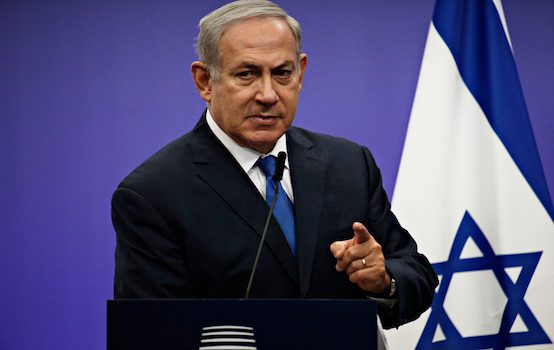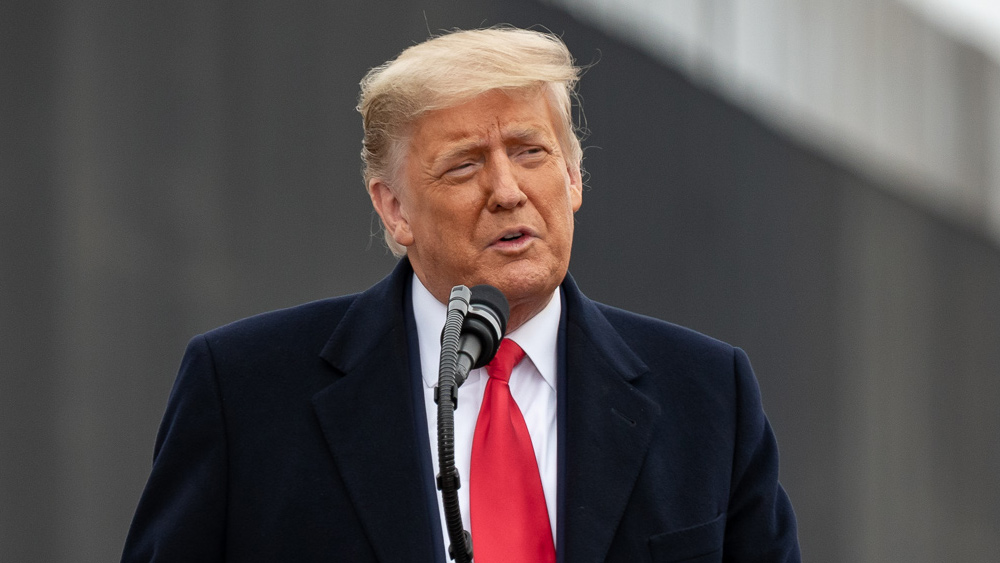How Trump Thwarted Calculated Israeli Effort to Keep U.S. in Syria
by Gareth Porter, The American Conservative:

The Pentagon was not the only party pressing Donald Trump to keep troops in Syria last year. It turns out the Israeli government and its supporters in Washington were working very hard to get the Trump administration to use America’s military presence there to support an Israeli campaign of airstrikes aimed at threatening war with Iran.
The Israeli strategy was aimed at dividing Russia from Iran and thus putting pressure on Tehran to withdraw its military personnel from Syria. A campaign by a pro-Israel think tank actually succeeded in getting such a policy ready for Trump’s approval last fall—although it was not supported by some Pentagon officials.
The story of the Israel lobby’s latest attempt to capture American policy, recounted here for the first time, reveals just how far Israel was able to reach into the Trump administration before the president personally intervened.
Israel’s Strategy of Provocation in Syria
In early 2018, Israel had stepped up the pace of its airstrikes against Iran-related targets in Syria. The original rationale for the strikes had been to prevent Iran from transporting advanced, highly accurate missiles through Syria to Hezbollah in Lebanon (although Israeli military intelligence had admitted nearly a decade ago that Hezbollah had already received hundreds of such weapons). But by 2018, the IDF had added another reason for the attacks: to force Iran to give up its military presence in Syria altogether. This despite the fact that Israel had failed to cite any evidence of any permanent Iranian bases there.
To pursue that objective, the Israelis adopted an ambitious strategy to create the impression that war could break out in Syria between Israel and Iran if the Russians didn’t intervene and force the Iranians out. On April 18, Dror Michman, a senior member of Netanyahu’s staff who had been on leave as visiting fellow at Brookings Institute, outlined that strategy in public for the first time. Michman explained that Israel had stepped up its strikes in Syria, which he said might well provoke Iranian military retaliation.
Michman acknowledged that the Israeli ability to carry out such a bombing in Syria could freely disappear at any time because of a Russian decision to provide their most advanced air defense system to the Syrian government (which was reportedly completed in late November). His comments were meant as a spur towards an intensive effort to mobilize Washington on Israel’s behalf.
The think tank on which Israel had long depended to influence U.S. policy—the Washington Institute for Near East Policy (WINEP), founded by the leadership of AIPAC in 1985—was already working on that problem. On April 13, a WINEP policy proposal by a senior fellow, Ambassador James F. Jeffrey, cleverly welcomed Trump’s idea of pulling out U.S. troops—but not all of them. Jeffrey suggested that the United States could reduce most of its ground forces in Syria over nine to 12 months, and then rely mainly on airpower over Syria to carry out a mission he called a “show of force” to “shape Russian and Iranian decisions.”
In July, Jeffrey’s initial proposal was elaborated upon in a longer WINEP paper on a “New U.S. Policy in Syria,” co-authored by the entire senior leadership of WINEP. It called for the United States to “[s]upport Israeli efforts to drive wedges between Iran, Russia, and Assad, including Israeli strikes on Iranian military sites.” The paper described an Israeli policy designed to “present Russia with a dilemma: either reign in Iran’s aggressive stance of face the possibility of a war between Israel, Iran and Hezbollah fought on Syrian territory….”
The authors explained the role of the United States in that policy as being to able impose “constraints on Iran’s movements” in Syria by “retaining small numbers of U.S. troops and introducing a no-fly/no-drive zone across the northern territory currently controlled by the United States and Turkey.”
Crafting a Policy to Support the Israeli Strategy
In August, Secretary of State Mike Pompeo, who was already on board with the general line of policy Jeffrey had advanced, created a small group of like-minded officials who supported Israel’s aggressive Syria strategy. He named WINEP’s Jeffrey to the newly created position of special representative to Syria. The Washington Post reported that Pompeo had tasked Jeffrey with creating a “coherent blueprint” for U.S. policy in Syria.
Jeffrey was already declaring in an early September interview with the Post that “the new policy is we’re no longer pulling out by the end of the year.” Instead, he explained, the troop presence would remain to “ensure an Iranian departure” from Syria as well as the “enduring defeat” of ISIS.
In mid-October, NBC News reported that this new policy had been “drafted and is circulating and is expected to be finalized in the coming weeks.” But it was never formally approved by Trump. NBC reporter Carol Lee noted on air that those who were critical of the draft policy—identified in the article as “Defense officials”—were concerned that “this is the first step toward trying to provoke Iran into a military engagement.”
Lee said those who had developed the policy denied that was their intention. But it was precisely the objective that Jeffrey and his WINEP co-authors had identified in their July paper for the larger Israeli strategy into which the U.S. policy was to fit.
While the pro-Israel contingent in the administration was awaiting approval of the new policy, however, the IDF was becoming even more provocative in Syria. On September 18, Israeli jets carried out missile strikes against targets near a Russian military base in Latakia province, the Alawi heartland of the Assad government in the country’s northwest. Syrian anti-aircraft missiles firing at the Israeli planes hit a Russian military aircraft, killing 15.
Read More @ TheAmericanConservative.com
Loading...



